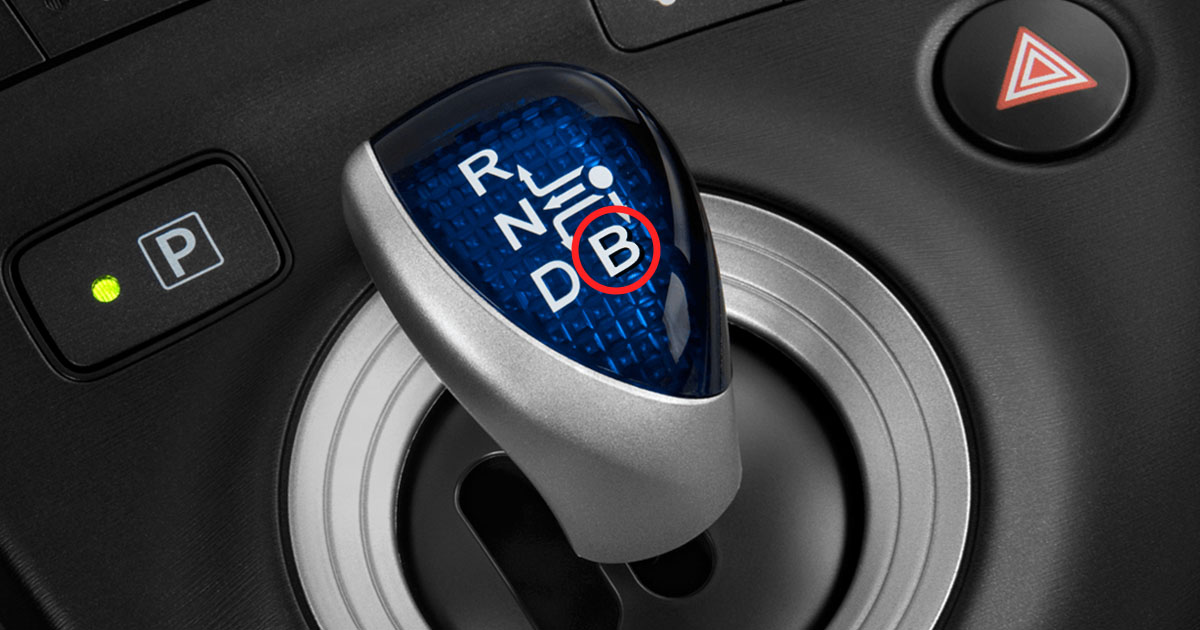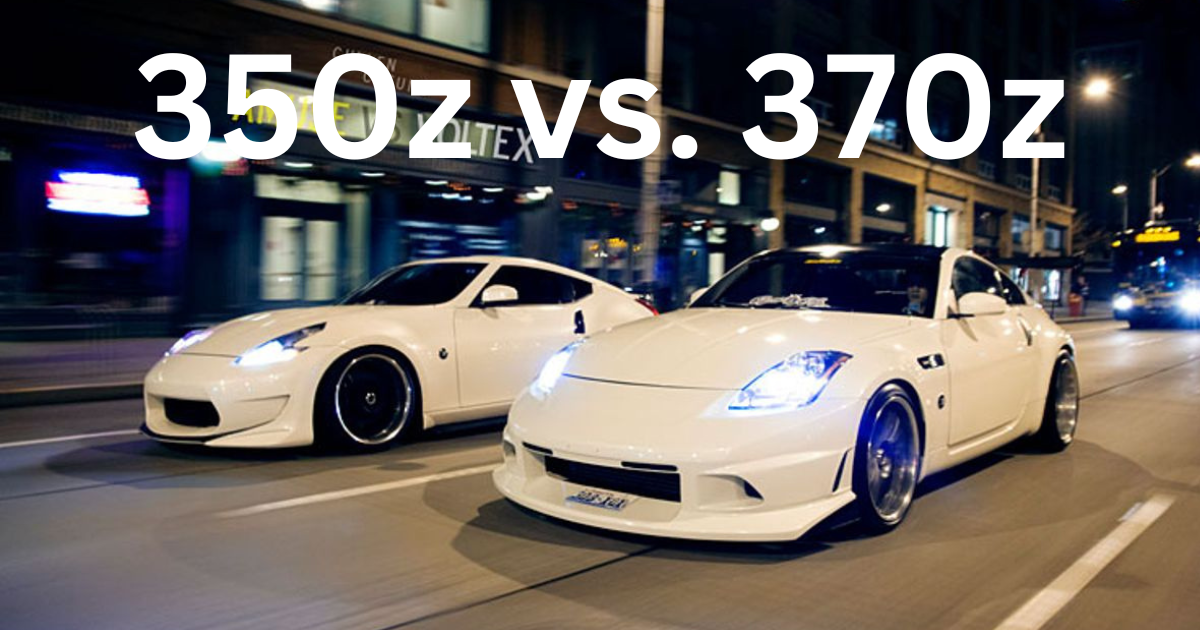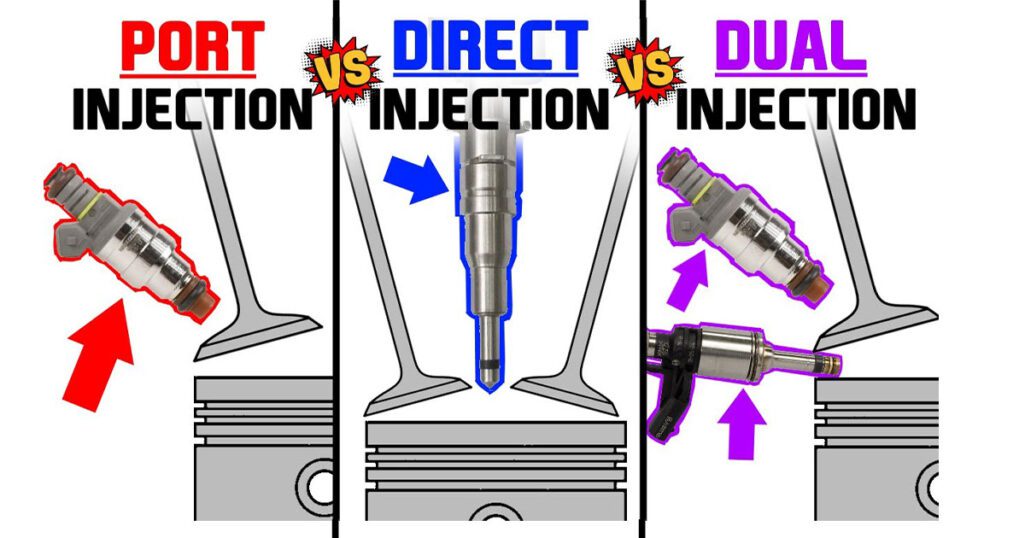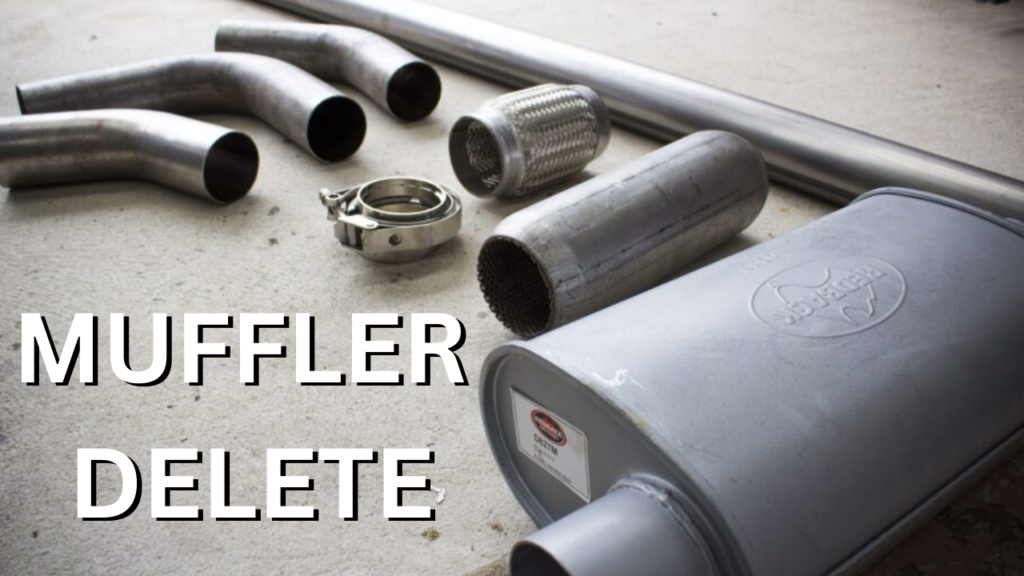
The simplest, least expensive, and least invasive approach to improve your car’s sound is to have the mufflers removed. However, does that make them the top pick?
Ideally, in order to improve the exhaust’s sound, it’s recommended that you add a cat-back or axle-back system.
However, removing your muffler by installing a muffler delete kit is a wonderful place to start if you’re searching for something safe and easy that, in many situations, will not violate your warranty.
This article will describe what a muffler delete is, what it accomplishes, the benefits and drawbacks of getting one, whether or not it is legal, and other relevant information.
What is a muffler?
A muffler is a component that serves as a sound-dampening component for the whole exhaust system of an automobile. The internal combustion engine’s heat and vibration produce noise, as its name suggests, which is muffled by this device. Older models of mufflers were cumbersome, constrictive, and unreliable; modern versions are much improved and horsepower-friendly.
What is a muffler delete?
A muffler deletion is a term that occasionally appears among car owners that is popular in the custom auto community. A muffler delete is a method that removes the device from the exhaust system for a number of reasons, as the name implies.
The procedure is also fairly simple: the muffler is taken off, a muffler deletion pipe is put in its place, and a welding torch is used to attach an exhaust tip to the end.

Purpose of a muffler
Mufflers are made to block out the exhaust noise, leaving behind a quieter and more pleasing sound. To accomplish this, they collaborate with resonators. Mufflers appear to be very basic on the exterior, but they actually involve a lot of intricate sound engineering.
Mufflers must be installed by automakers in order to comply with noise restrictions. Despite the fact that they all have the same function of reducing exhaust volume, mufflers can differ greatly in design and function depending on the car. Some high-end GT vehicles have massive engines that have been amply muted to the point where they are as silent as any typical economy vehicle.
However, many enthusiasts believe that even factory sports-tuned exhausts are too quiet and lack sufficient aggression. They fix this by completely removing the muffler.
Muffler Construction
Mufflers not only exist in a variety of sizes and forms but also in a variety of materials. Mufflers that come standard from the manufacturer are usually constructed of aluminized steel. This is simply a more affordable alternative that includes hot-dipping mild steel to coat it with a hard, corrosion-resistant alloy. However, stainless steel, which is constructed of denser steel, offers greater corrosion resistance, durability, and longevity. It also costs a lot more money.
Neither stainless steel nor aluminized steel automatically contributes to performance. Think about your location and the local weather while deciding between the two. Rust development in aluminized steel may be sped up in environments with wetter winters and salted roadways. Stainless steel might be more suitable and economical for some applications.
Different Types of Mufflers

The following are different types of mufflers used in vehicles:
Multiple Baffle Silencers
In a multiple baffle silencer, holes are bored into the walls of the silencer tube to allow exhaust gas to escape. As a result, pulse reflection muffles the sound. These are somewhat limiting.
Turbo Silencers
Turbo silencers have an S-shaped channel that lets gas enter before being pushed out and into the tube. The gas flow is inadequate, and these are constrictive.
Straight-Through Silencers
Straight-through silencers employ a tube that has been perforated. From the silencer’s input to its output, the gas is driven here. With little flow limitation, this occurs. The gas is discreetly released from the pipe’s openings.
Performance Silencers
Performance silencers modify the exhaust tone of your car by amplifying and tuning it, utilizing their resonating chamber. Comparing these silencers to conventional mufflers, the sound they produce is frequently deeper and more aggressive.
Silencer Inlets
The current exhaust system in your automobile determines which type of inlet is ideal for you. If the system is standard, you must consult the owner’s manual to learn more about the vehicle. When purchasing your own exhaust system, it is essential to research which inlet type is compatible with the make and model of your vehicle. Additionally, speak with your mechanic.
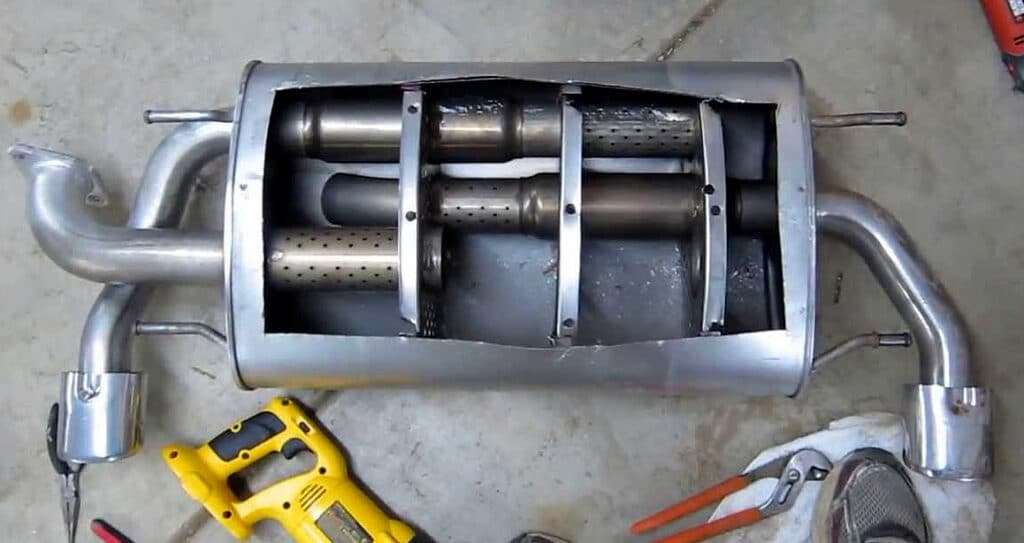
What is the difference between a straight-through exhaust system and a muffler delete?
Without a muffler, a straight pipe exhaust is just that—a straight pipe—that extends from the header to the rear of the car. These exhaust systems, which are mostly used in racing cars, do not obstruct gas flow. Muffler deletion and straight-through exhaust systems essentially produce the same outcomes.
The distinction is that a muffler delete entails the removal of the vehicle’s actual muffler. A muffler delete is a more affordable option if you want to get rid of the muffler on your car rather than installing a straight pipe exhaust system.
A muffler can always be reinstated if you change your mind about the delete, which is another benefit of a muffler delete over the installation of a straight-through exhaust system. Otherwise, a muffler-equipped exhaust system would have to be built in place of the straight-through system.
Muffler Delete Pros and Cons
Advantages of Muffler Delete
1. Minimal Cost
Regarding the advantages of using a muffler delete, its cost-effectiveness comes to mind. The exhaust pipe may be checked to see if it is operating properly with just just one tool. Furthermore, because of its accessibility, you can change this piece of work wherever you want.
2. Enhanced Performance of Horsepower
The car’s horsepower rises as backpressure is decreased. It functions best in older cars with constrained muffler chambers that ultimately restrict gas flow, increase backpressure, and lower engine horsepower. The horsepower and torque are boosted when the muffler is taken out.
3. An Aggressive Sound
The most common justification for a muffler removal is this sound. Removing the muffler is pretty much the only method to achieve the muffler delete sound that certain automobile owners adore.
Because a car without a muffler has a more powerful engine, it naturally creates more noise as the gases rush to escape the exhaust system.
4. Clean Appearance
When the muffler does not dangle below the rear bumper, the view from the back is clean. It would have the slick, ideal aesthetic that you desired.
5. Light Weight
By replacing your vehicle’s muffler, you can shed some weight. You can lose more weight than the additional 25 pounds your car may be carrying at the moment.
Disadvantages of Muffler Delete
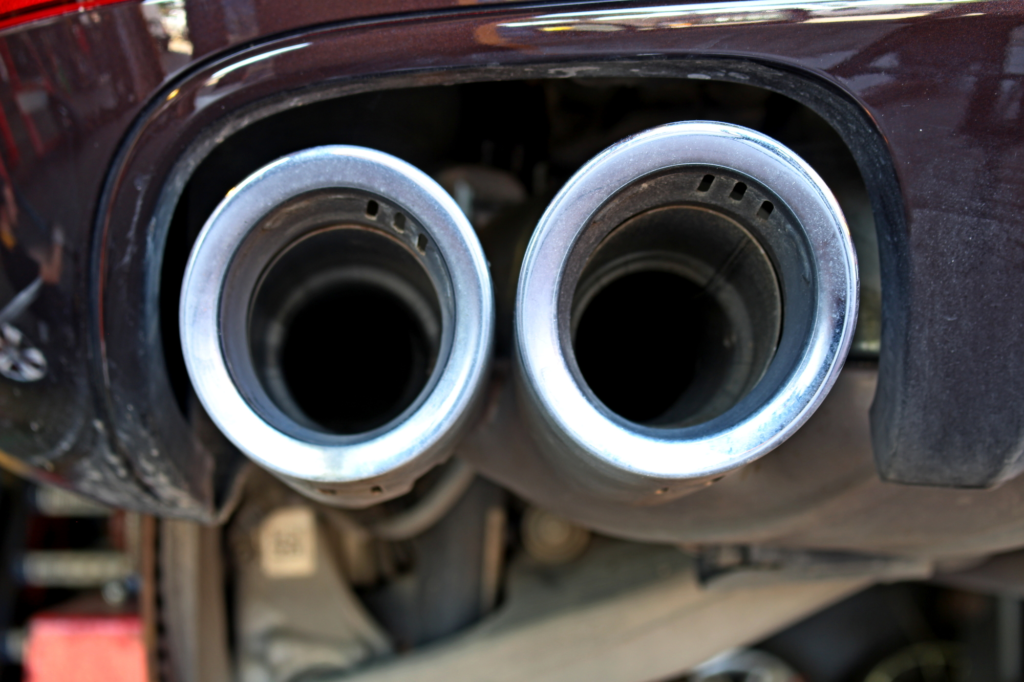
Although there are certain upsides, there are also some drawbacks to removing a muffler. Consider these drawbacks before deciding to get rid of your muffler.
1. The Noise
After a while, a muffler delete’s strong noise might become annoying. Then there is the droning noise, which can irritate others close to you and leads to other drawbacks.
Problems with the law: There are regulations against noise pollution, and depending on where you live, it can be against the law to drive around in such a noisy car. As a result, taking the muffler off your car could get you in legal trouble.
2. Risks of Cleaning
The muffler has to be cleaned of the debris that has accumulated there. Cleaning your muffler deletion requires caution because it can remove the paint. You obviously don’t want this to occur. Do you not? Of course, the ideal course of action for resolving any kind of car issue is to follow maintenance advice. As a result, you can use it to maintain and clean the muffler delete.
What are the advantages of exhaust customization?
In the past, removing a muffler may help a car owner who was concerned about performance in various ways. With more recent automobiles, the increase in horsepower is less noticeable because they are made to be less constrained. To boost their vehicle’s volume, modern car modders typically choose a muffler deletion.
A muffler delete will therefore produce the desired engine sound, whether it be a growling or roaring one. Just be aware that the noise may appear deafening at greater speeds and that there may be a low droning as you drive at moderate rates.
Muffler Delete vs. Resonator Delete
The main goal of exhaust modifications is usually to improve the sound. Both the muffler and the resonator have minimal effects on the car’s weight but no discernible effects on the car’s fuel efficiency or horsepower. Regarding the labor costs involved in deleting them, they are likewise similarly priced.
Which is better, then? A muffler delete, in my opinion, is a much better choice than getting rid of the resonator.
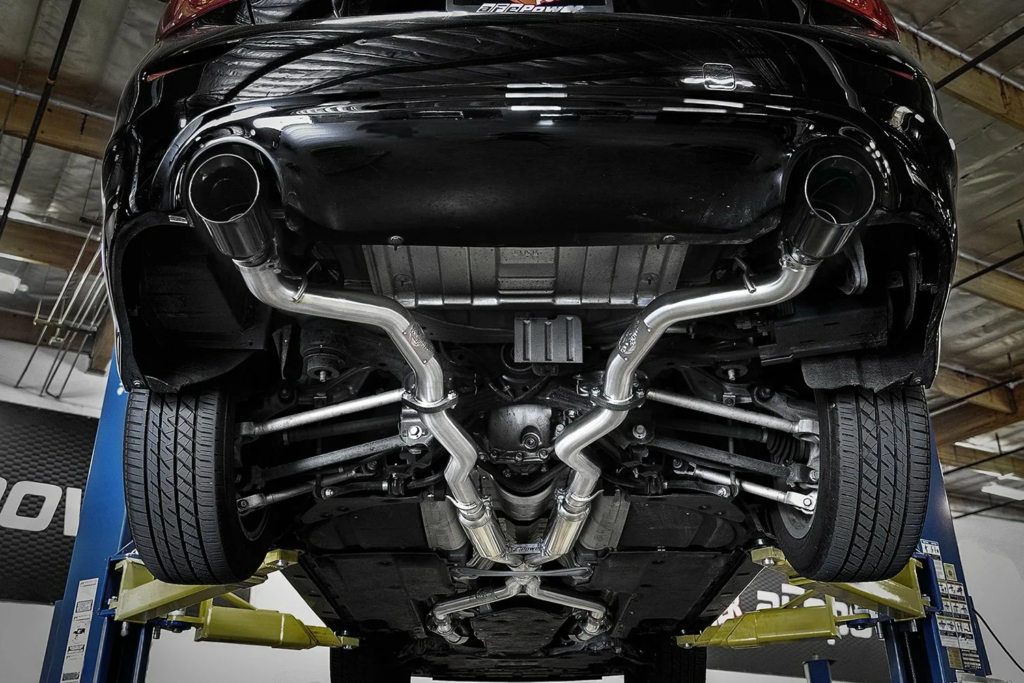
If you remove the muffler, which reduces the sound and makes it quieter, the exhaust sound will become more obnoxious and louder. The resonator may have a small impact on volume, but its main function is to prevent obtrusive or intolerable noise from being produced by the resonant frequencies.
Will a Muffler Delete Pass Emissions?
Without a doubt! A routine vehicle inspection, much less one that concentrates on the exhaust system, won’t pass with a muffler delete. If you’re wondering whether removing a muffler will raise emissions, the answer is a resounding no.
The muffler has no smog-reduction or emission-control technology; all it does is reduce noise. But that won’t stop the examiner from failing you on the test or even the ECM of your car.
Is deleting your Muffler Bad?
It’s best to get a muffler deletion done professionally at a shop or thoroughly understand what you’re doing if you’re considering doing it yourself. A muffler deletion can end up being more detrimental than beneficial. Without a muffler, your engine won’t be damaged, but you risk damaging internals or other crucial parts if you don’t know what you’re cutting or removing. Poor welding can result in an exhaust leak or rusting, vibrations from pipes against the body’s cosmetics, and a faulty pipe cut that throws off your car’s ECU.
Beyond the actual labor, law enforcement may also issue citations. It is prohibited to modify an automobile’s exhaust system to produce noise above the allowed limits, whether the vehicle is new or old. Although it is unlikely that you would be stopped for removing your muffler, it is possible that you will be stopped for breaking a noise law.
Is a muffler delete illegal?
A muffler deletion may or may not be legal, depending on the area. Since cars without mufflers are typically used off-road, it is generally forbidden to operate one on public highways in the U.S.
The problem is that every local authority has decibel limits. Because of this, it is prohibited in some places for you to remove the factory-installed muffler.
However, local ordinances are unaffected as long as your car doesn’t exceed the permitted sound pollution decibel level. Muffler deletions typically don’t violate these restrictions, but you should always check your local laws before making any modifications to your car.
Even if you are based outside of the United States, it is best to check your state and municipal legislation in advance. Different laws may apply in other lands, areas, and nations generally.
Should you Have a Muffler Delete?
A muffler reduces the pace at which the vehicle can expel exhaust gases, causing back pressure in the exhaust and robbing you of horsepower. The muffler can be removed, which will also make your automobile louder. However, before you perform a muffler delete, you are unsure of how your engine will sound. Although some automobiles sound worse when straight-piped, your car will often sound better.
A vehicle’s sound plays a significant role in the overall driving experience. Get a muffler deletion from Performance Muffler in Phoenix, Arizona, and the surrounding areas now for a clear-flowing exhaust, improved throttle response, a far superior sounding vehicle, and a fantastic driving experience all around.
How to Do a Muffler Delete
For reasons like cost or the joy of doing something yourself, you could decide to DIY get a muffler deletion done on your car. The good news is that, with some direction, you can perform a muffler deletion on your own. Here are some instructions on how to do a muffler delete on your car once you are certain that doing so is permitted in your area.
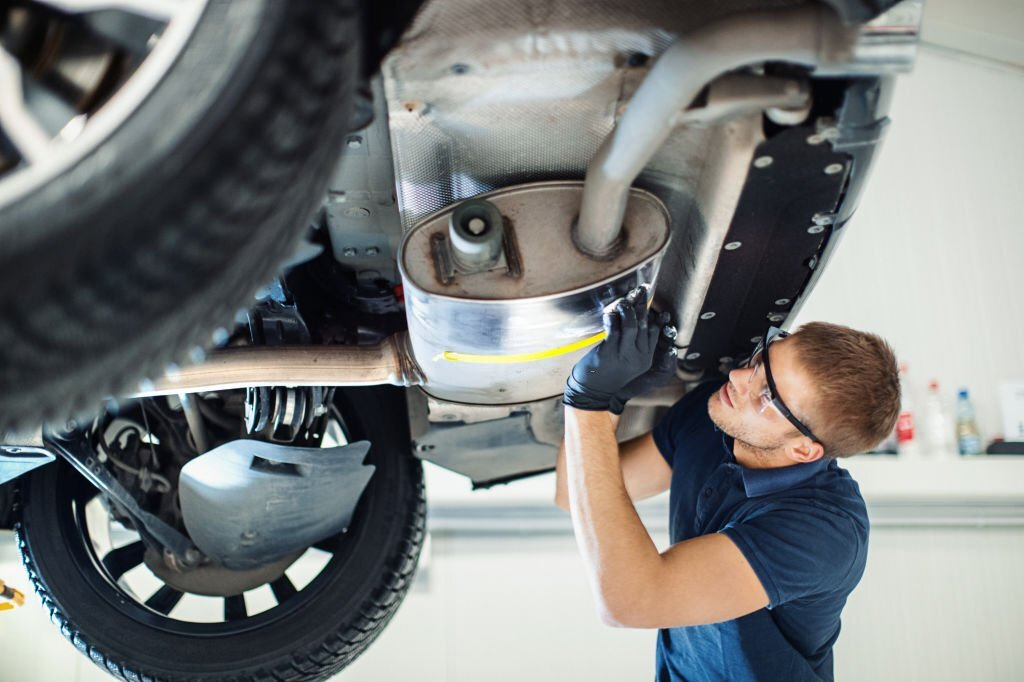
Lift the Car
Because your car’s muffler is on the bottom, you’ll need to raise it somewhat with your jack before you can get underneath it. To prevent any mishaps, make sure the automobile is in gear before doing this. Once you’ve reached the proper height, leave the car jack underneath the vehicle and use a jack stand to support it.
Locate the Muffler
You now find the car’s exhaust system. It needs to be close to the exhaust pipe and is typically a sizable chamber that is joined to the exhaust pipe. It could be welded to the car or clamped in place, depending on the kind of muffler used.
Remove the Muffler
Your task is made simpler if a clamp is used to secure the muffler. You might want to apply oil or WD-40 to the clamps to make the clamp removal operation simpler.
You would need to use a saw to cut out from the pipe attached to if the muffler was welded.
Mount a Pipe
Fabricated pipes are the ideal solution when a muffler needs to be removed. Make that the inlet and outlet of the muffler are the same diameters as the muffler delete pipe.
Fasten All the Bolts
Overlap the newly constructed pipe with the exhaust tip. You next tighten the bolts to secure the upgraded exhaust system after using new clamps to hold them in place.
If you’re not up for performing the muffler delete yourself, you can use the internet to find qualified assistance. You should be able to find a nearby muffler repair company by conducting a search on the internet for “muffler deletion near me.”
How Much Does A Muffler Delete Cost?
Therefore, you might be wondering, “How much does muffler deletion cost nearby?” The price of a muffler delete, however, varies depending on the type of vehicle, your location, the shop where the muffler delete is performed, and the manufacturer of the muffler. Therefore, these variables, especially the type of vehicle involved, will affect how much a muffler delete for your automobile will cost.
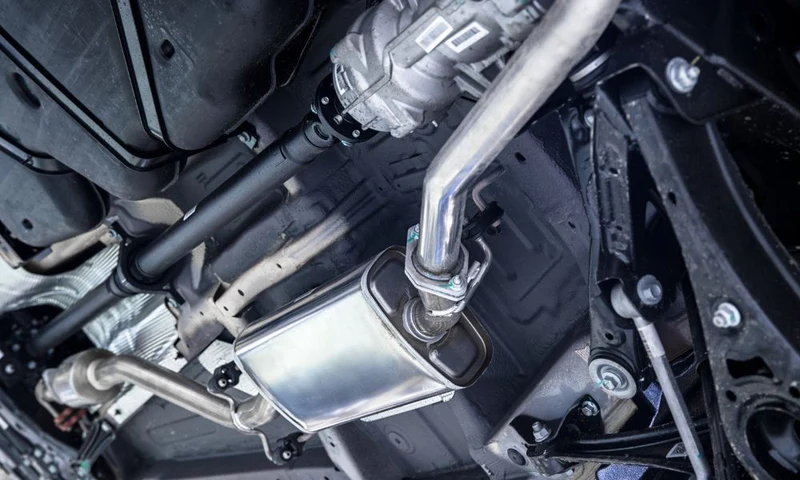
For instance, the price for removing the exhaust system from a Camaro will be different than that of a Dodge Challenger, BMW, or Mustang. Similar to how certain mechanic shops will charge more than others based on their location and reputation, you will spend less if you have the necessary expertise to remove the muffler.
All things considered, a professional muffler deletion should cost between $100 and $250. Depending on your automobile and the components you need for the project, DIY auto repair could cost you anywhere from $50 to $100. If you want to know how much it costs to repair a coolant check out our article on the cost of coolant repair.
Here is a short glimpse at what various cars typically cost to have their mufflers deleted.
| Vehicle | Average Price |
| Dodge Charger | $115-$125 |
| GMC Sierra | $135-$145 |
| BMW e90 | $125-$135 |
FAQ:
Q: When deleting a muffler, how long does it take?
The task of removing a car’s muffler is not difficult; the only challenging parts might be taking out a welded muffler and fitting the made-up pipe. So, removing a muffler can take anywhere from 30 minutes to two hours, depending on who does it. A professional will take less time than someone who does it themselves. So everything depends on the person carrying out the duty.
Q: Will muffler deletion cause problems?
Most of the time, having a muffler removed has no negative consequences on your car. It is forbidden to drive a car on public highways in the majority of American states. You might have legal support in some states.
Q: Does the muffler delete mess with gas?
No, a muffler deletion has no impact on fuel economy. Muffle delete is taking out the muffler from your car, which makes it louder when it’s running. A muffler is a tool for muffled sounds. It helps to reduce the loud noise that your engine makes when it burns fuel.
Q: Will muffler deletion result in a reduction of power?
Not at all. Depending on the car model and muffler type, it can instead accomplish the exact reverse. Older vehicles with restricted gas flow have significantly less engine power. Therefore, in this circumstance, a muffler deletion will boost engine power.
However, with the more recent models’ more effective automobile mufflers, a muffler deletion might not be required. Overall, a muffler delete won’t result in power loss.
Q: Does taking out the muffler increase power?
The type of muffler and the type of vehicle are factors. Because the gases in older cars with restricted mufflers cannot exit the exhaust system easily, back pressure builds up over time. In these circumstances, removing the muffler will greatly improve gas flow, which eventually leads to a gradual increase in the engine’s horsepower.


